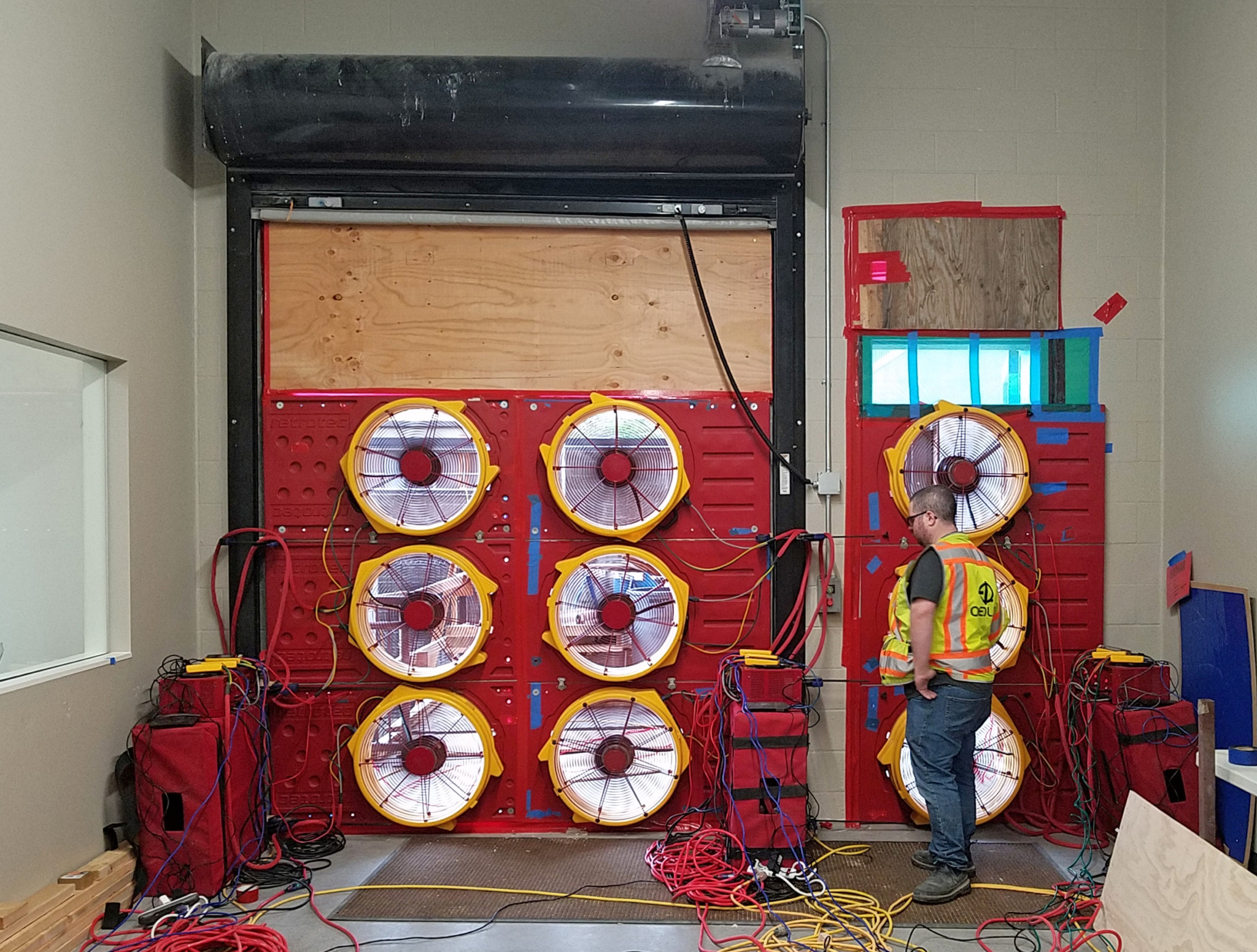



06.01.22
Here at Bora, we’re celebrating the result of last week’s whole building airtightness test of Lincoln High School, which achieved a measured leakage rate of 0.126 (positive pressure) and 0.107 (negative pressure) cfm/sf at 75 pa!
To put this into perspective, code maximum air leakage (per the 2021 IECC) is 0.4 cfm/sf at 75 pa, and Bora’s internal performance criteria sets a maximum leakage of 0.2 cfm/sf at 75 pa. So the value of 0.126 cfm/sf and 0.107 cfm/sf for the six-story, 289,000sf Lincoln High School is almost twice as tight as Bora’s standards and almost four times as tight as code requirements! Until now, Bora’s tightest building has been the recently net-zero certified but much smaller Creekside High School, coming in at 0.109 cfm/sf at 75 pa.
Why Airtightness Matters
When designing a building, airtightness is critical to its overall performance. By wrapping our buildings with a highly airtight enclosure, we minimize the influx of unwanted pollutants while retaining as much quality indoor air as possible.
At Bora our mission is to uphold Climate, Health, and Equity in our design. Designing through the lenses of these values is how we are gauging our work as “successful.” So how does airtightness fall in step with these three areas? Here’s how it’s central to our mission.
Climate. Airtightness allows the thermal enclosure to reduce HVAC loads and thus conserve energy from most buildings’ largest energy end-use, space conditioning. We often think of insulation as the barrier that keeps the heat on the desired side of an enclosure, but more often than not, infiltration, not conduction or vapor drive, is the primary path for heat and humidity to travel through an enclosure. In actuality, the insulation values of a leaky building hardly matter.
Health. Airtightness allows us to have quality control over indoor air. The tighter a building, the higher percentage of ventilation air is intentionally introduced through a filtration system. A leaky building allows a significant portion of outdoor air to bypass the filters, carrying outdoor pollution into the indoor environment untreated.
Equity. Airtightness neutralizes outdoor conditions, allowing building systems, rather than happenstance, to determine indoor environmental quality. Therefore, a tight building in a polluted area can be just as safe as a tight building in a pristine environment. The same cannot be said for a leaky building.
Airtightness is not “applied sustainability,” but the effective execution of proactive technical design and construction strategies. Our buildings, like LHS, are more sustainable than the benchmark project because of our deep design expertise and attention to detail. These skills deliver added value to our clients and our project‘s’ occupants. It is crucial that we talk about achieving high levels of airtightness on our projects and draw the connection to these outcomes.
How Did We Achieve This?
Success at air sealing is all about diligence and persistence all the way through. Careful attention to the drawn details at all the intersections where leaks could happen and thorough review of the shop drawings, including integration of those coming from different trades, ensures that nothing falls through the cracks (or results in cracks). Bora and our envelope commissioning consultant, RWDI, met many times during this phase to pore over details, develop and test mockups, and conduct ongoing inspections during construction.
In addition, the strategies we used to achieve these results include:
With Lincoln on track to open to students this fall, we commend the exterior design team for their diligent detailing effort and especially their persistence in the construction phase, with a big assist from building performance engineers RWDI during detail, submittal, and mockup review and envelope commissioning. We also extend our congratulations to the various contractors that followed through across this very massive building envelope to make Lincoln High School an excellent model of airtightness.